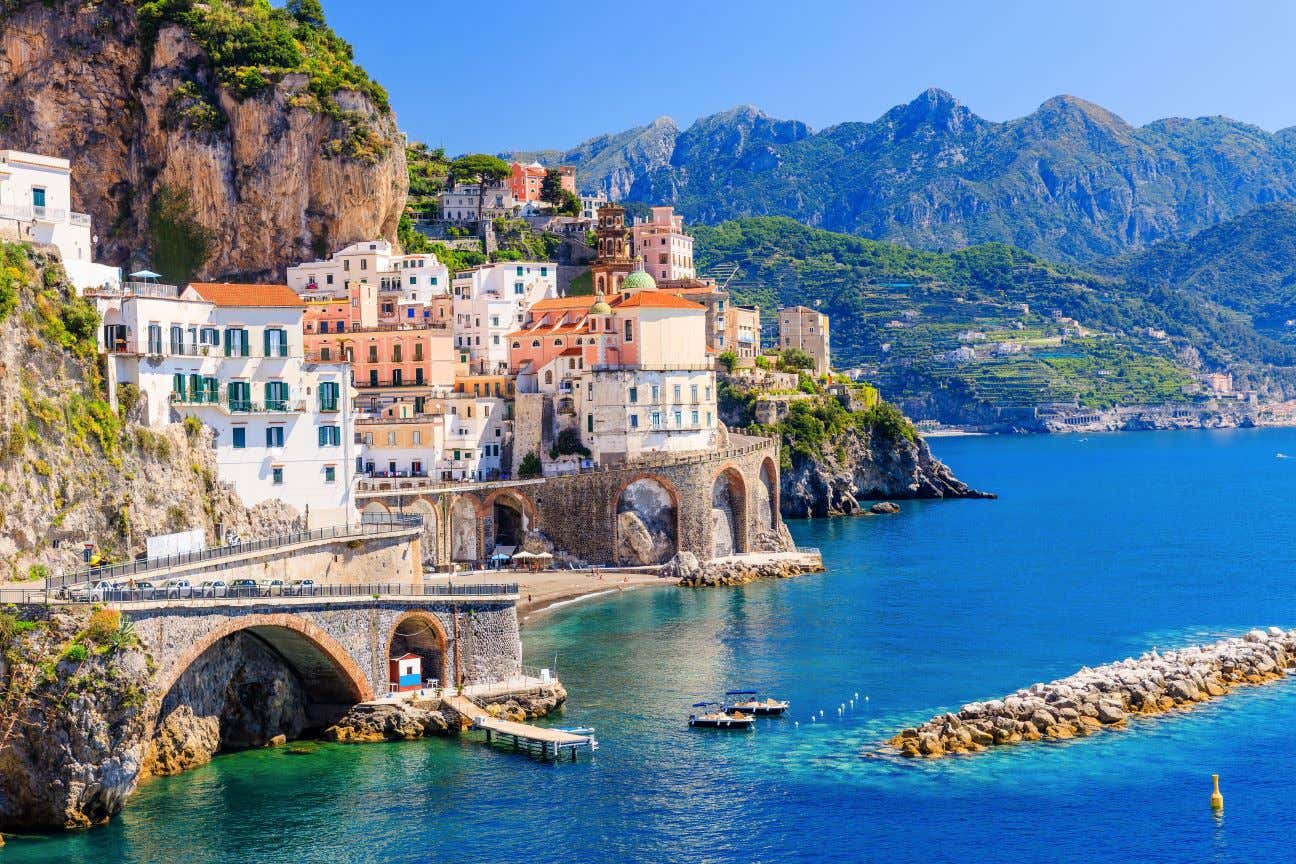What to Do in Rome: 14 Must-See Attractions and Top Tips
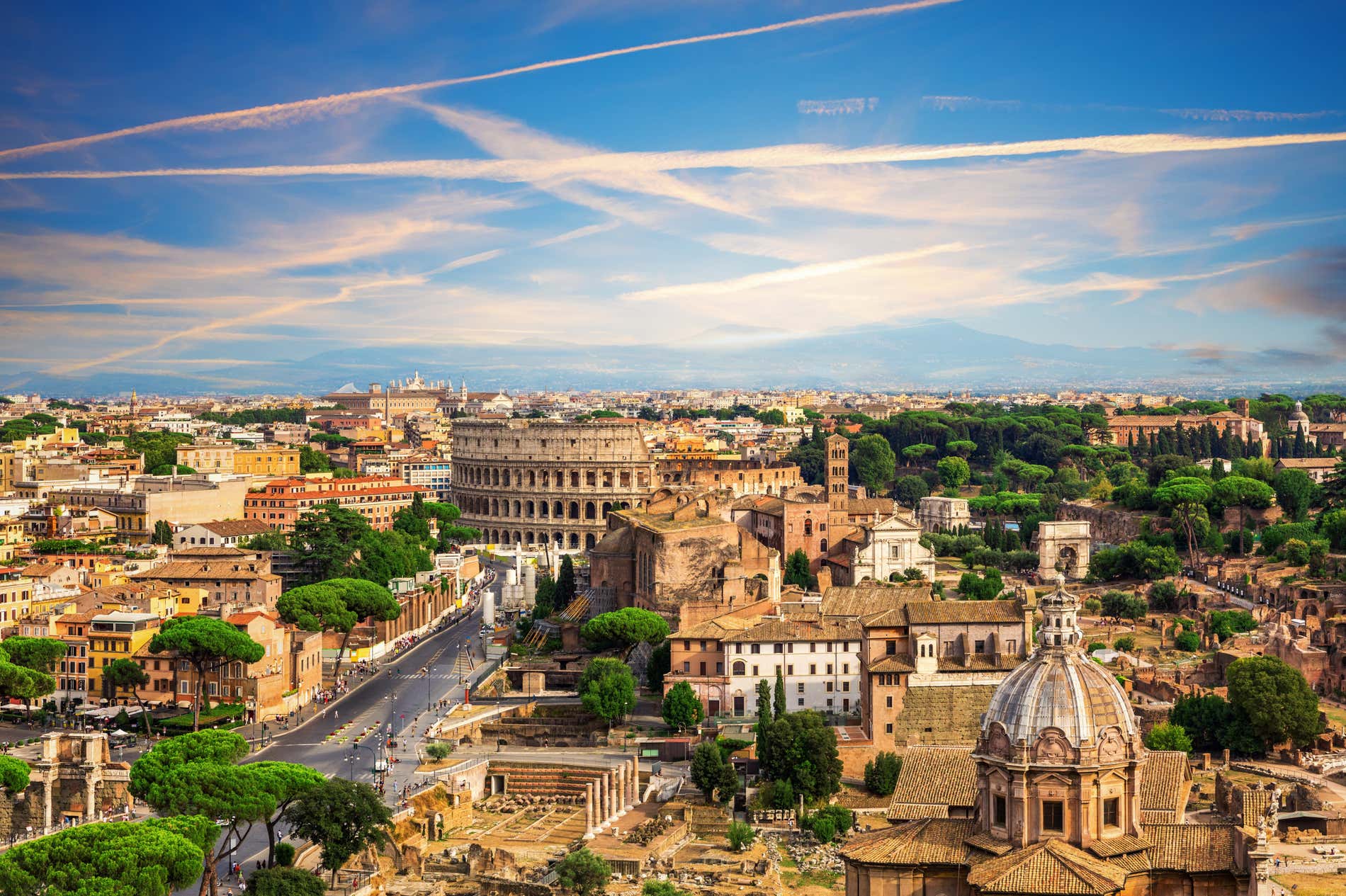
History, ancient ruins, art, culture, and of course, delicious Italian cuisine—Rome truly has it all! With over two millennia of history, the Eternal City offers endless experiences for travelers. Planning a trip to Rome can feel overwhelming—what monuments to visit, where to stay, what to eat… the list goes on. That’s where we come in. Today at Civitatis, we’ve compiled a list of must-see landmarks and insider tips to make your trip unforgettable! If you’re looking for a more comprehensive look at the city, check out Civitatis’ comprehensive Rome guide!
1. Take a Tour of The Colosseum
No list of things to see in Rome would be complete without starting with the Colosseum. As the world’s largest Roman amphitheater and an iconic symbol of the Eternal City, it’s no wonder it’s one of the Seven Wonders of the Modern World! Also known as the Flavian Amphitheatre, this colossal structure was built between 70 and 80 AD and could hold up to 50,000 spectators—an astonishing feat for its time.
In ancient Rome, the Colosseum hosted spectacular entertainment, from gladiator battles and public executions to exotic animal hunts. Despite the fall of the Roman Empire, the amphitheater remains a powerful symbol of Roman wealth and power, having survived for nearly 20 centuries through earthquakes and Rome’s significant transformations.
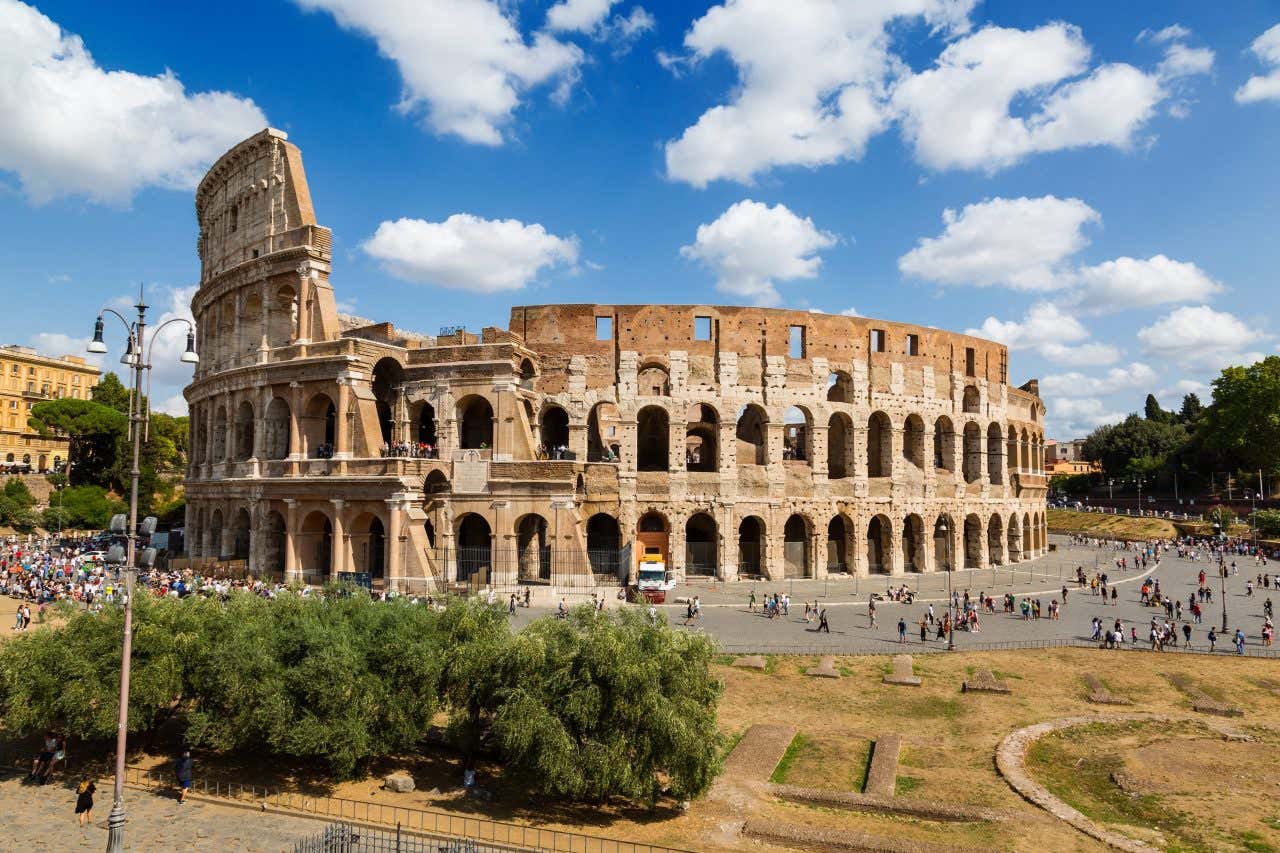
A visit to the Colosseum is a must during your trip to Rome. Check out our guide to the Colosseum and some of our most popular activities at the world-famous landmark:
- A great way to visit not only the Colosseum, but many other attractions in Rome is by getting a Go City: Rome Explorer Pass.
- You can also immerse yourself in Roman history by booking a guided tour of the Colosseum.
- For an even more engaging experience, opt for a guided tour that includes access to the Gladiator’s Arena!
2. Visit The Roman Forum and Palatine Hill
Located near the Colosseum, the Roman Forum is another essential stop for history buffs. Once the political, religious, and commercial heart of ancient Rome, the Forum was a bustling hub of public debate, ceremonial events, and trade during the Roman Empire’s peak.
Among the archaeological remains, you’ll find ruins of temples dedicated to various gods, law courts, and structures like the Curia, where the Senate gathered. It’s a journey back in time to the grandeur of the Roman Empire!
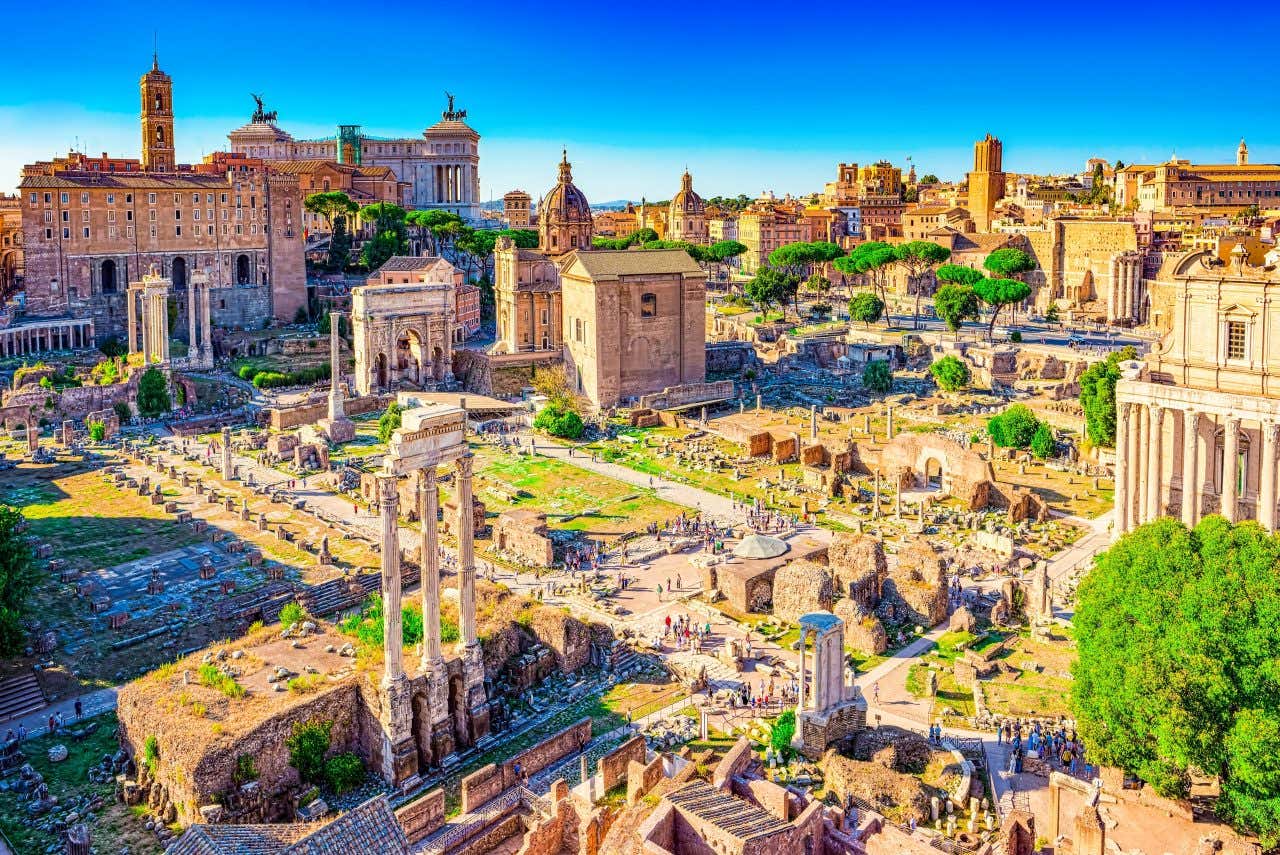
Beside the Forum lies Palatine Hill, where, according to legend, Romulus founded Rome after defeating his brother Remus. During the imperial era, the Palatine was home to emperors and the Roman elite, offering luxurious residences and city views. Explore both the Forum and Palatine Hill with a guided tour, which often also includes a visit to the Colosseum.
3. Explore The Pantheon
Another unmissable thing to do in Rome is visit the Pantheon, one of the best-preserved ancient buildings and a true masterpiece of Roman architecture. Originally built in 27 BC, it was dedicated to all the gods of ancient Rome but was later destroyed in a fire. The structure we see today was rebuilt during the reign of Hadrian around 118 AD.
Its dome, the largest in the world until the 15th century, features a 9-meter (29-foot) oculus that lets in natural light, symbolizing the connection between heaven and earth. Additionally, the construction of the dome—without metallic reinforcement—remains a marvel of engineering.
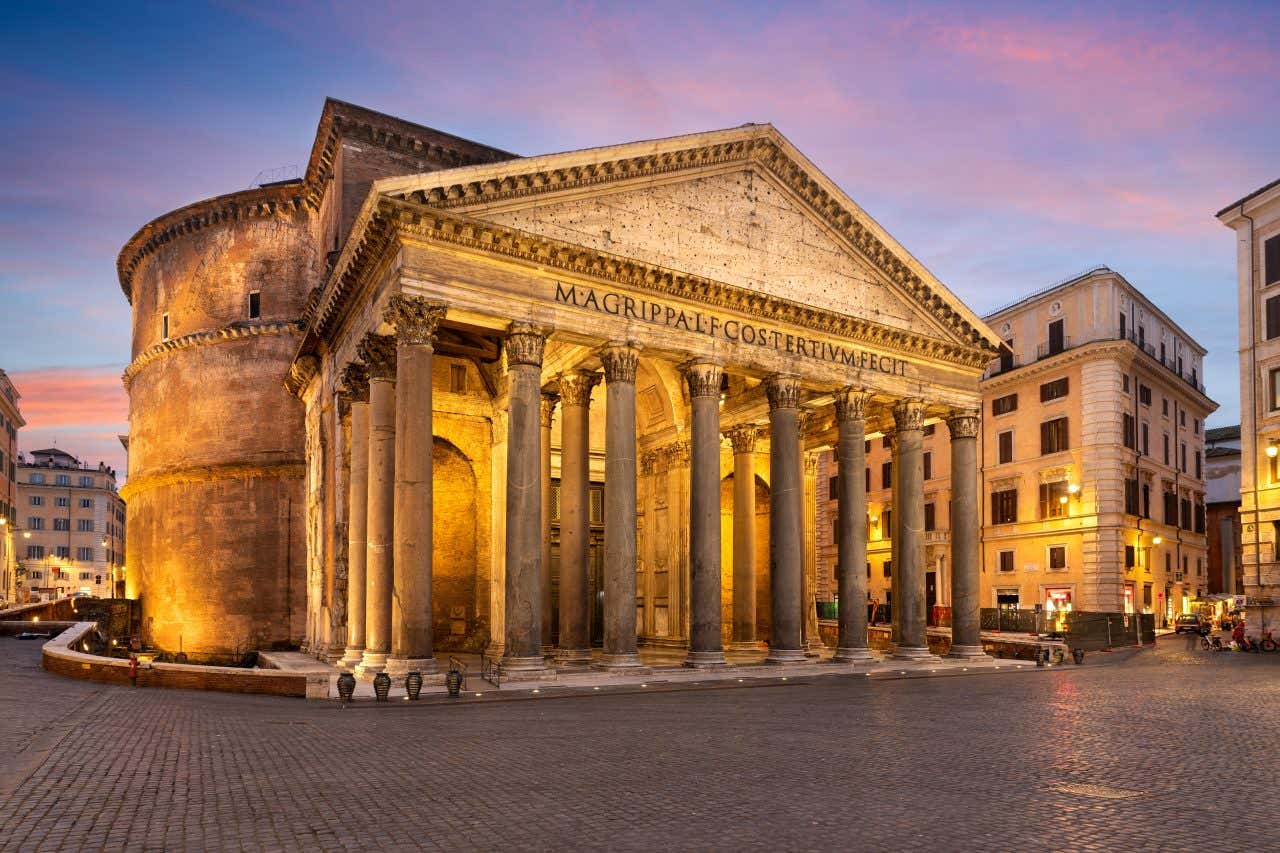
In the 7th century, the Pantheon was converted into a Christian church dedicated to Saint Mary and the Martyrs. Today, it also serves as the final resting place of notable figures such as the Renaissance artist Raphael and Italian kings Victor Emmanuel II and Umberto I. To visit the Pantheon, you can purchase tickets on-site or buy skip-the-line tickets for added convenience.
4. Stroll Through Piazza Navona
Close to the Pantheon, you’ll find Piazza Navona, one of Rome’s most famous and lively squares, known for its rich history and stunning architecture. Originally a Roman stadium in the 1st century, the area was later transformed into the oval square we know today.
While strolling around Piazza Navona, you’ll encounter three monumental fountains. The most famous one is the Fountain of the Four Rivers, designed by Gian Lorenzo Bernini in 1651. It represents the four great rivers known at the time: the Nile, Ganges, Danube, and Rio de la Plata. The square is also home to the Fountain of Neptune and the Fountain of the Moor, located at either end.
The square is surrounded by beautiful baroque buildings, and its vibrant atmosphere is enhanced by outdoor cafés, street performers, and artisan markets. It’s the perfect spot to soak in the charm of Rome!
5. Learn About Imperial & Medieval Rome at Castel Sant’Angelo
Next up on our list is Castel Sant’Angelo, a fortress by the River Tiber originally built as Emperor Hadrian’s mausoleum around 123 AD. Over time, the fortress has served various purposes, from an imperial tomb to a military stronghold, a papal residence, and even a prison.
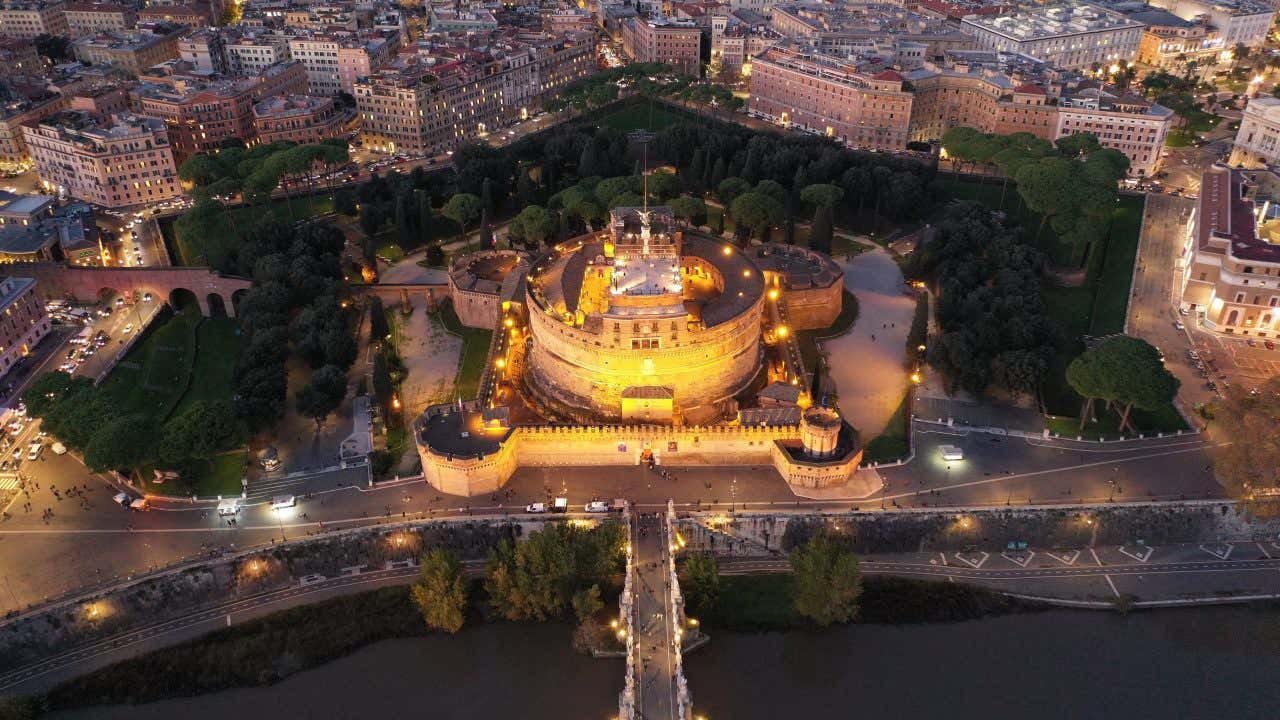
When you visit, you’ll see the medieval walls added to fortify the structure against invasions. Did you know there’s also a secret passageway that connects the castle directly to the Vatican? Known as the Passetto di Borgo, this passageway allowed popes to escape during times of danger. Today, Castel Sant’Angelo houses a museum showcasing its history, artworks, and relics from both the imperial and medieval eras.
For the best experience, book a guided tour that includes access to the terrace, offering one of the most beautiful views of Rome.
6. Throw a Lucky Coin Into the Trevi Fountain
Next on the list is another Roman icon: the Trevi Fountain, one of the most spectacular fountains in the world. Famous for its grand baroque design, the fountain is carved from travertine marble and features Neptune riding a shell-shaped chariot pulled by seahorses. Beside the god of the sea are statues representing Abundance and Health. The fountain was completed in 1762 after more than 30 years of construction.
Of course, no visit is complete without tossing a coin into the fountain to make a wish. According to the 18th-century tradition, you should stand with your back to the fountain and throw a coin with your right hand over your left shoulder. One coin guarantees your return to Rome, two coins for those seeking love, and three for couples hoping for a happy marriage. How many coins will you throw?
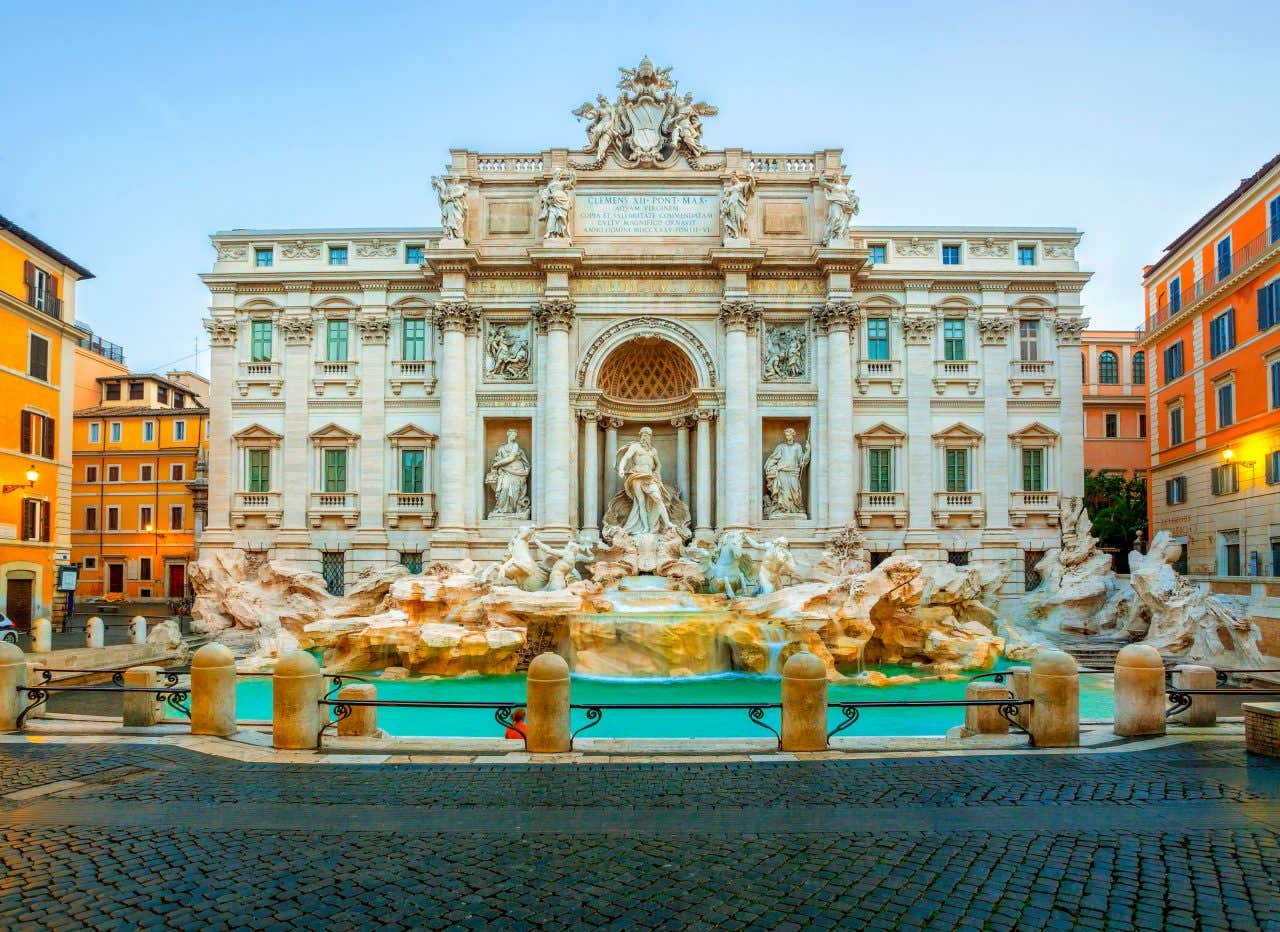
Every day, visitors throw an average of €3,000 into the Trevi Fountain. The money is then collected and used for charitable projects and maintaining the fountain itself.
If you want to avoid the crowds, visit early in the morning between 7 am and 9 am or late at night after 10 pm. For a deeper dive into its history, join a Trevi Fountain tour, which also includes an underground visit to the archaeological site 9 meters (29 feet) below.
7. Shop ‘Til You Drop at Piazza di Spagna
Rome is filled with charming squares that attract visitors and locals alike, not just for their beauty, but also as part of daily social life. One of the most famous is Piazza di Spagna or the Spanish Steps, named in the 17th century when the Spanish embassy was located there.
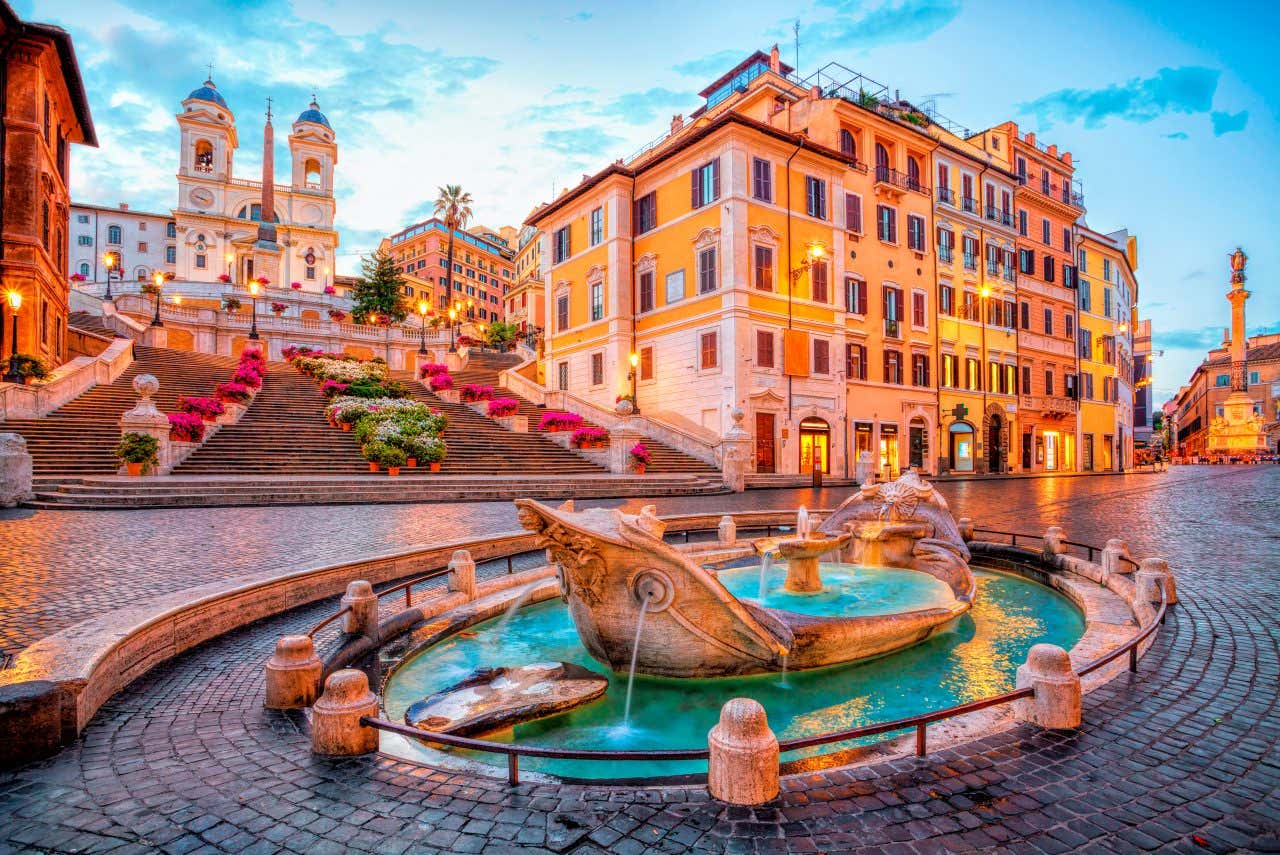
The square is home to a grand staircase of 135 steps leading up to the Trinità dei Monti church. In spring, the steps are adorned with colorful flowers, making them even more picturesque. At the center of the square is Fontana della Barcaccia, a stunning fountain by Pietro Bernini depicting a sinking ship.
If you’re a shopaholic, Piazza di Spagna should be at the top of your list! The square is a hub for fashion, surrounded by high-end boutiques and designer shops—perfect for luxury shopping.
8. Have a Picnic in Villa Borghese
Another top spot in Rome is Villa Borghese, one of the city’s largest and most beautiful public parks. Originally built in the early 17th century as the residence of the Borghese family, it was transformed into a park in the 19th century. Spanning 80 hectares (197 acres), Villa Borghese is perfect for a leisurely stroll, a relaxing afternoon, or even a picnic.
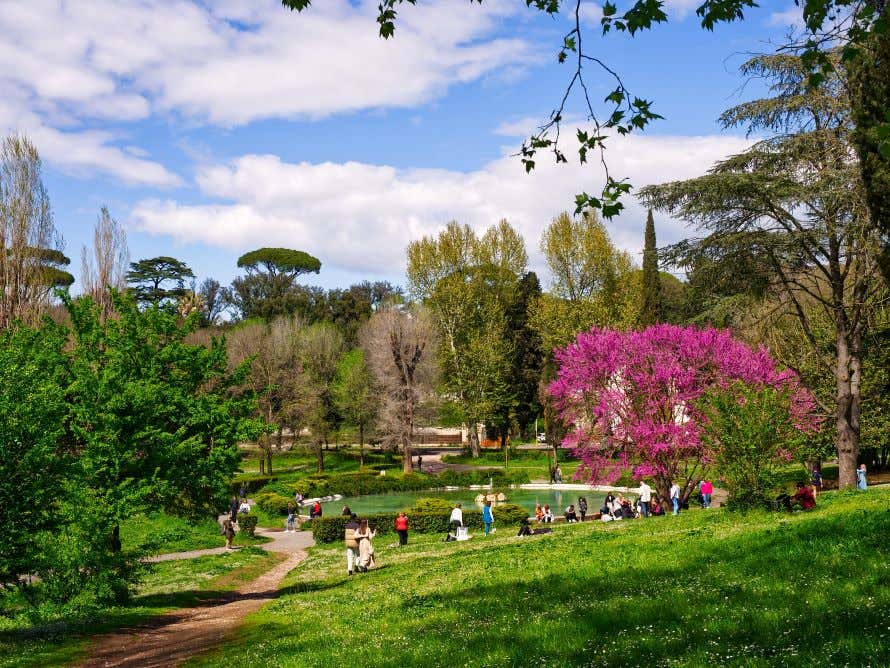
After your picnic, check out the Borghese Gallery, a museum showcasing an impressive collection of artworks by Caravaggio, Bernini, Raphael, and Titian. The museum itself is also a masterpiece, with its frescoes and luxurious decor. Explore it for yourself on this guided tour of the Borghese Gallery.
Villa Borghese also houses the National Gallery of Modern Art, the Exhibition Pavilion, and Rome’s Zoological Garden.
9. Browse the Capitoline Museums at Capitoline Hill
Capitoline Hill, one of Rome’s seven historical hills, is home to Piazza del Campidoglio, designed by the Renaissance artist Michelangelo in the 16th century. The geometric star-shaped pavement reflects the grandeur of ancient Rome and the continuity of Renaissance Rome.
The square is flanked by three historical buildings: the Palazzo Senatorio, Palazzo dei Conservatori, and Palazzo Nuovo, which together form the Capitoline Museums. These museums, founded in 1471 by Pope Sixtus IV, are considered the world’s oldest and house an extensive collection of art and antiquities, including the famous sculpture of the Capitoline Wolf.
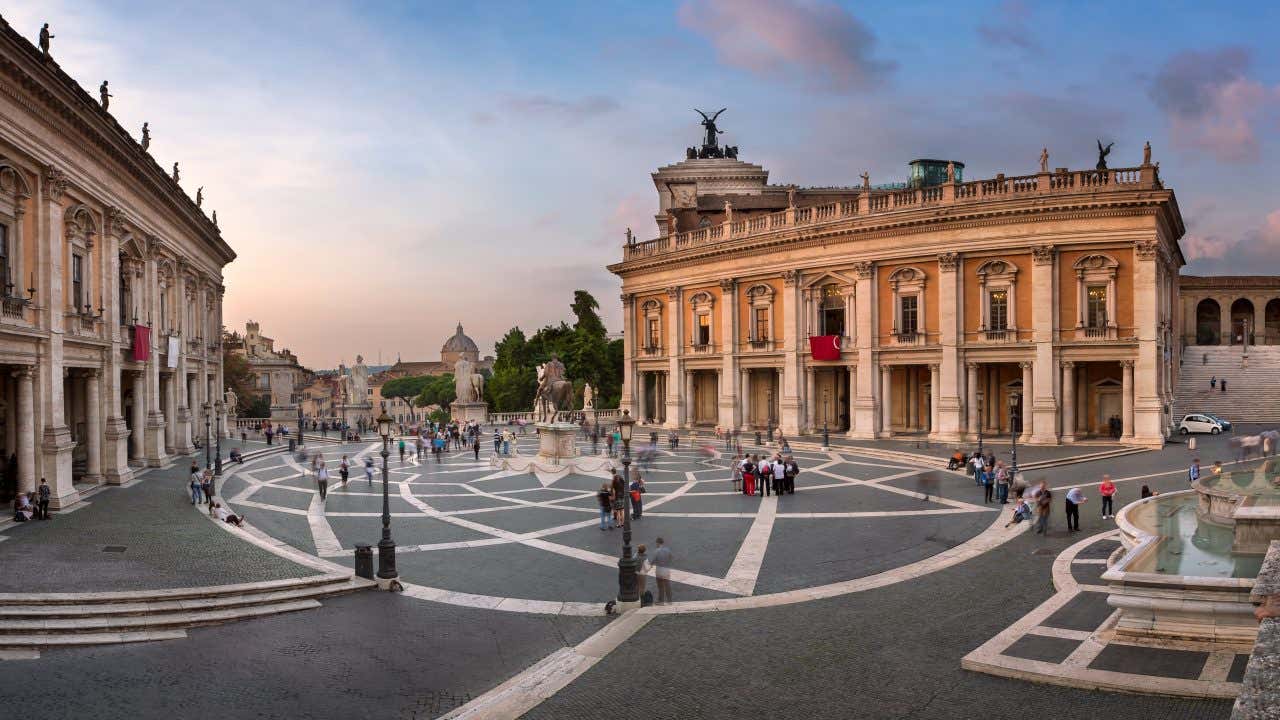
From the museum terraces, you’ll enjoy incredible panoramic views of Rome. To explore the museums in-depth, book a guided tour of the Capitoline Museums.
10. Delve Into Ancient History at Via Appia Antica and the Catacombs
One of the main reasons Rome draws millions of visitors year after year is its extraordinary connection to the past. The city feels like a living history book, with some of the world’s oldest and most significant historical attractions. Take the Via Appia Antica, for example—widely regarded as the first road in history and the lifeblood of the Roman Empire, it played a crucial role in shaping ancient Rome’s dominance.
Inaugurated in 312 BC, the Via Appia originally connected Rome to Capua in southern Italy and was later extended to Brindisi, a key port that facilitated trade and communication with the eastern reaches of the empire. This strategic route was not only a critical link for trade but also became essential for military transport, contributing to the Roman Empire’s vast expansion.
As you walk along the Via Appia Antica, you’ll see ancient Roman ruins, towering aqueducts, and stretches of peaceful countryside. It’s truly a journey back in time, offering a rare glimpse into life in Ancient Rome.
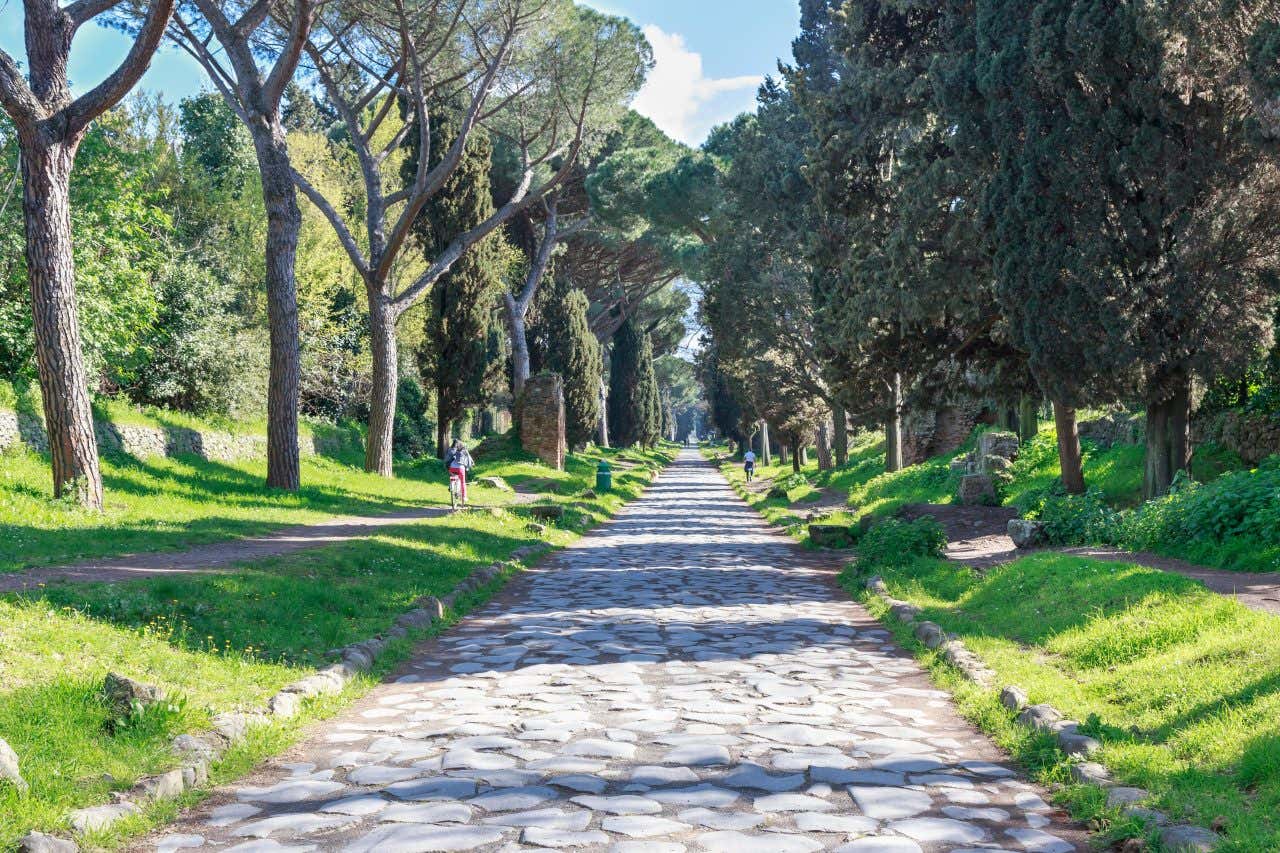
Along this historic road, you’ll also encounter other fascinating landmarks, such as the Catacombs of San Sebastiano and San Callisto. These underground burial sites form a labyrinth of tunnels and chambers where early Christians performed burials and religious rituals during times of persecution.
The Catacombs of San Sebastiano, dating back to the 3rd century, once housed the relics of St Peter and St Paul and remain the resting place of St Sebastian, honored by the basilica that bears his name. The Catacombs of San Callisto, even older, were established in the 2nd century as the official cemetery of the Roman Church, containing the tombs of popes and martyrs.
Exploring the Via Appia Antica and its nearby catacombs is a truly unique experience, especially for history buffs. To delve deeper into these remarkable sites, this tour of the Catacombs and Via Appia Antica is the perfect way to enrich your visit to Rome!
11. Make the Rounds of The Papal Basilicas
Visiting Rome’s churches offers a glimpse into more than just religious devotion—it reveals the immense influence of Christianity on the history of Italy and the world. The Eternal City is home to four Papal Basilicas, the most significant Catholic churches in Rome. These basilicas are:
- St Peter’s Basilica: The most famous of the four, built over the tomb of St Peter, the first Pope. It stands as the heart of the Catholic Church and a symbol of its power.
- Archbasilica of St John Lateran: The Pope’s official seat and the oldest Papal Basilica, it holds the prestigious title of ‘Mother and Head of All Churches in the World’.
- Basilica of St Paul Outside the Walls: Constructed over the tomb of St Paul, this is Rome’s second-largest basilica, after St Peter’s.
- Basilica of St Mary Major: Dedicated to the Virgin Mary, this basilica is renowned for its stunning architecture, rich art collection, and sacred relics, including fragments believed to be from Jesus’ manger.
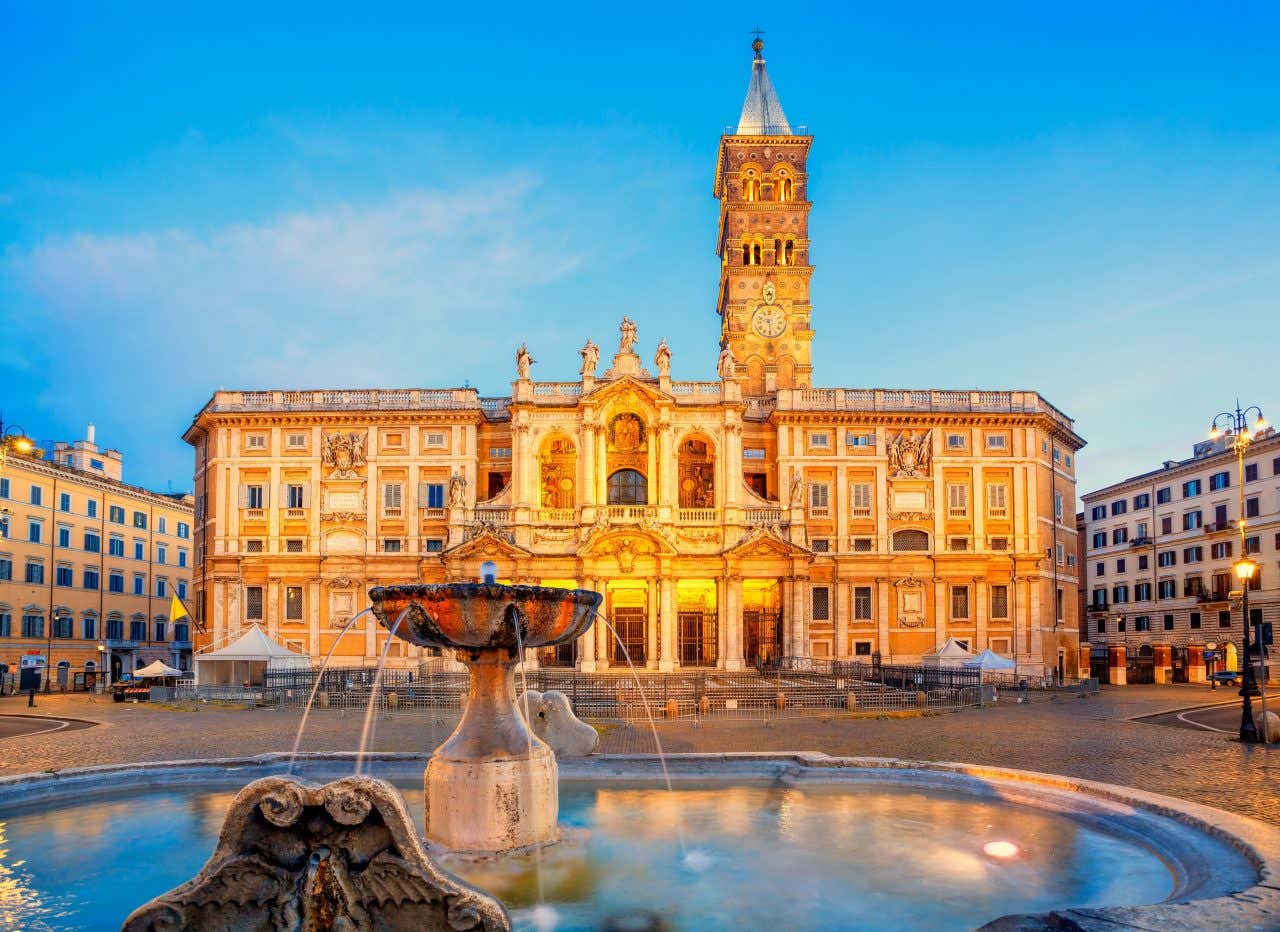
Entry to all Papal Basilicas is free, however, certain areas within them may require a fee. Additionally, there may be restrictions to certain areas during religious ceremonies. For a more unique experience, attend an opera concert in the Basilica of St Paul Outside the Walls.
12. Wander Through the Market at Campo de’ Fiori
Another iconic square in Rome is Campo de’ Fiori, or “Field of Flowers,” a lively spot steeped in history. The square gets its name from its origins as an open field in the city center where wildflowers once grew.
During the Middle Ages, however, Campo de’ Fiori became infamous as a site for public executions. One of the most significant events in its history was the execution of philosopher and theologian Giordano Bruno, who was burned at the stake for heresy by the Roman Inquisition on February 17th, 1600. A statue of Bruno now stands in the center of the square as a tribute to his legacy.
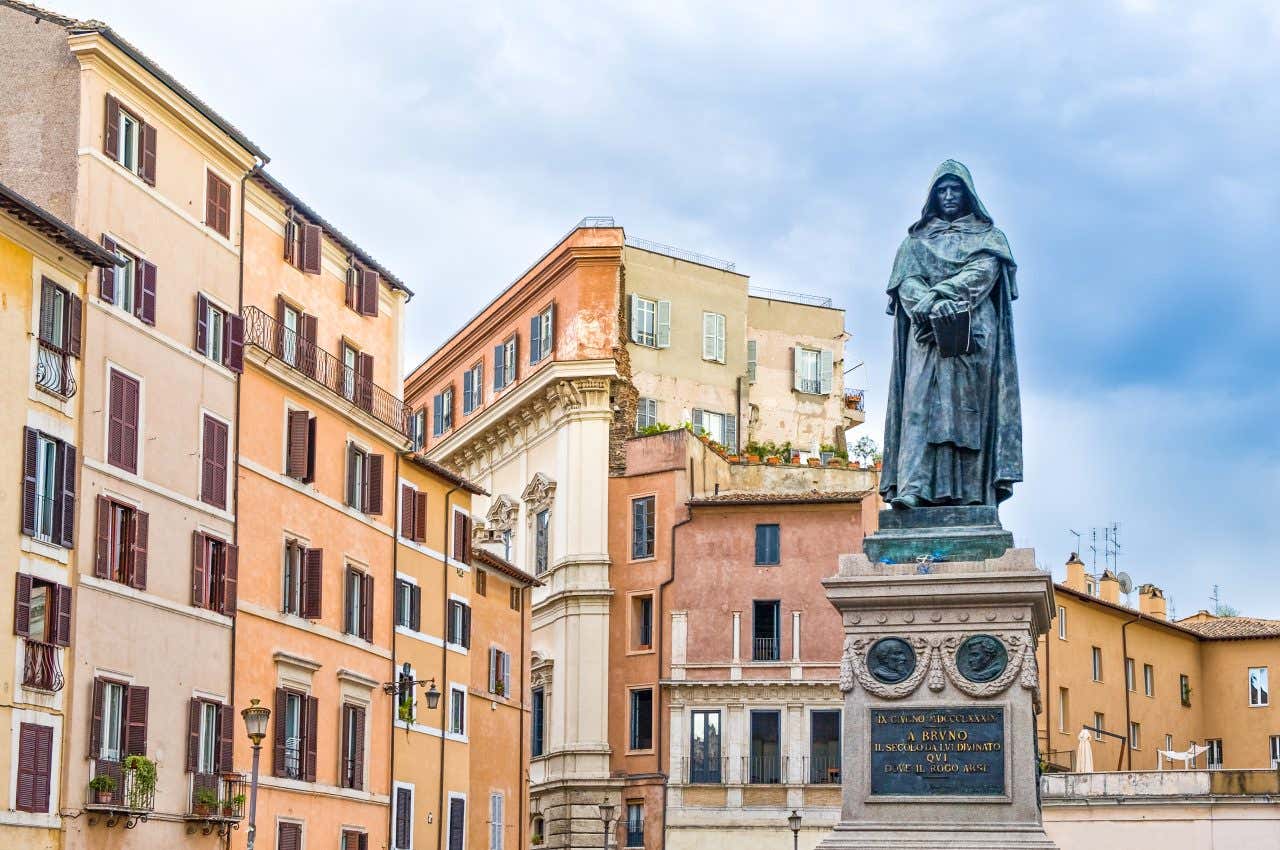
Today, Campo de’ Fiori hosts a bustling market every day except Sunday, where you can browse fresh local produce like fruit, vegetables, and cheeses, making it a perfect spot to immerse yourself in Roman culture. As the day winds down, the square transforms into a vibrant hub of nightlife, with bars and restaurants drawing crowds for food and socializing. It’s the ideal place to enjoy both the history and modern-day charm of Rome.
13. Venture Into the Vatican City
You can’t talk about what to see in Rome without mentioning the glorious Vatican City, one of the most iconic destinations in the world. More than just the center of the Catholic Church, the Vatican is a treasure trove of history, art, and architecture.
Though located within Rome, the Vatican is its own independent city-state, covering just 44 hectares (108 acres), making it the smallest country in the world. It operates under its own governance, led by the Pope, with its own administration, and laws, and is protected by the Swiss Guard.
Fortunately, no additional documents are required to visit Vatican City beyond those needed to enter Rome. However, one important tip is to adhere to the dress code: be sure to cover your shoulders and knees. Below, we’ve highlighted the must-see sites in the Vatican.
St Peter’s Basilica
The heart of the Vatican and the cradle of the city is St Peter’s Basilica, one of the grandest in the world and undoubtedly the most important in the Catholic Church. It is from here that the Pope celebrates the most important liturgical ceremonies of the religion.
The site where the Basilica was built in the 4th century is where the apostle and first Pope, St Peter, was buried after his martyrdom. The saint’s tomb is even located in a crypt under the main altar, considered the most sacred place in the basilica.
The basilica was rebuilt in the 16th century to the designs of some of the greatest artists and architects of the Renaissance era, including Donato Bramante, Michelangelo, and Gian Lorenzo Bernini, and was completed in 1626. One of the most iconic elements is its dome, designed by Michelangelo, which is 136 meters (3.2 feet) high and can be seen from many points in Rome.
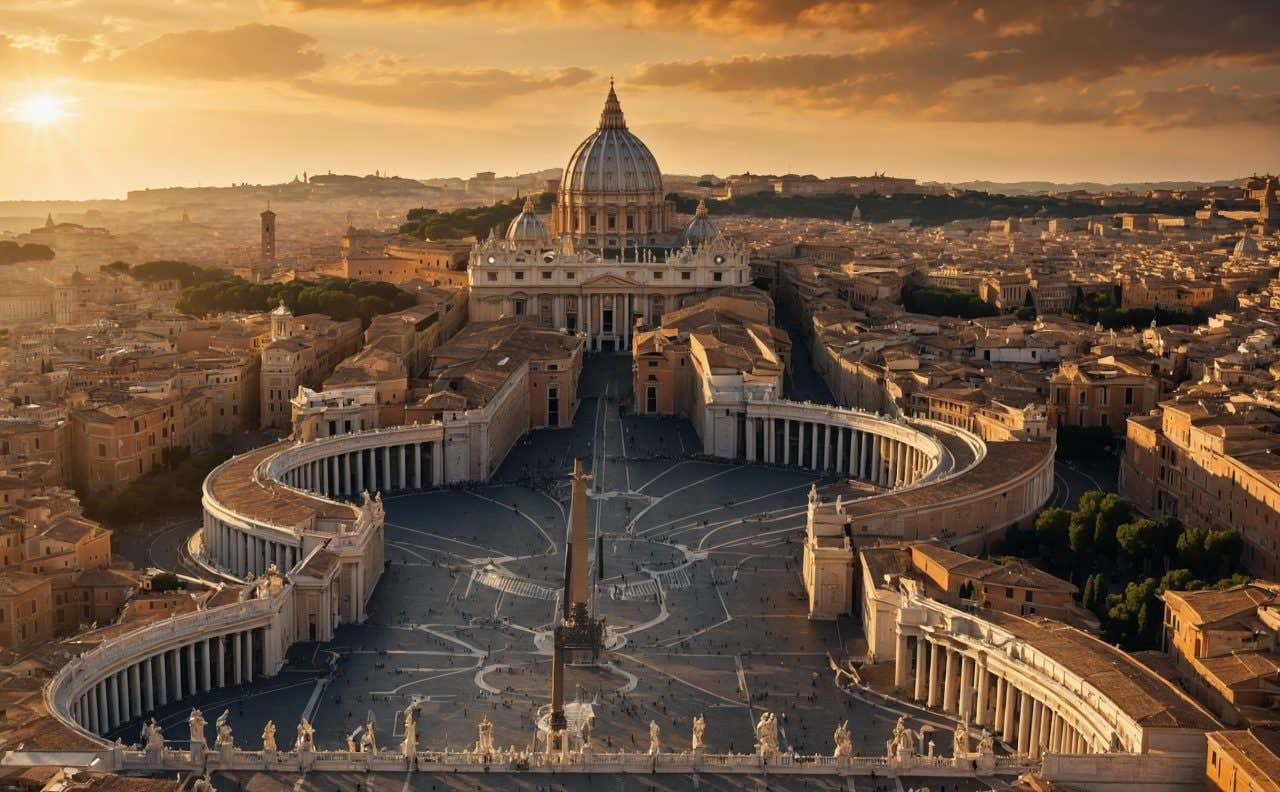
If all this history hasn’t yet convinced you to visit this impressive basilica, here are a few more details:
- The interior of the basilica is vast and decorated with marble, mosaics, and sculptures.
- The nave can seat 20,000 people.
- As well as the main altar above St Peter’s tomb, its imposing bronze canopy was designed by Bernini.
- One of the most famous works in the world is inside the temple: Michelangelo’s Pietà, a sculpture depicting the Virgin Mary holding the body of Jesus Christ after the crucifixion.
Admission to St Peter’s Basilica is free, but keep in mind that religious events may affect visiting hours. If you’d prefer to be accompanied by a guide who will tell you all about the temple, book a guided tour of St Peter’s Basilica.
Vatican Museums and the Sistine Chapel
A visit to the Vatican Museums is a must for anyone heading to Rome. Founded by Pope Julius II in the early 16th century, this vast museum complex is home to over 70,000 works of art displayed across 26 museums. Its galleries showcase an extraordinary array of classical art, archaeology, religious art, and more.
Key highlights include:
- The Sistine Chapel: Known worldwide for Michelangelo’s magnificent frescoes, including the famous ceiling and The Last Judgement on the altar wall. This chapel is not only a pinnacle of Renaissance art but also holds great religious significance as the site of the papal conclave.
- Raphael’s Rooms: A series of four rooms adorned with frescoes by Raphael and his disciples, including the iconic The School of Athens, a masterpiece illustrating his unparalleled skill in depicting philosophical and biblical scenes.
- Pio-Clementino Museum: Famous for its remarkable collection of Greco-Roman sculptures, including masterpieces like Laocoön and His Sons and the Colonna Venus.
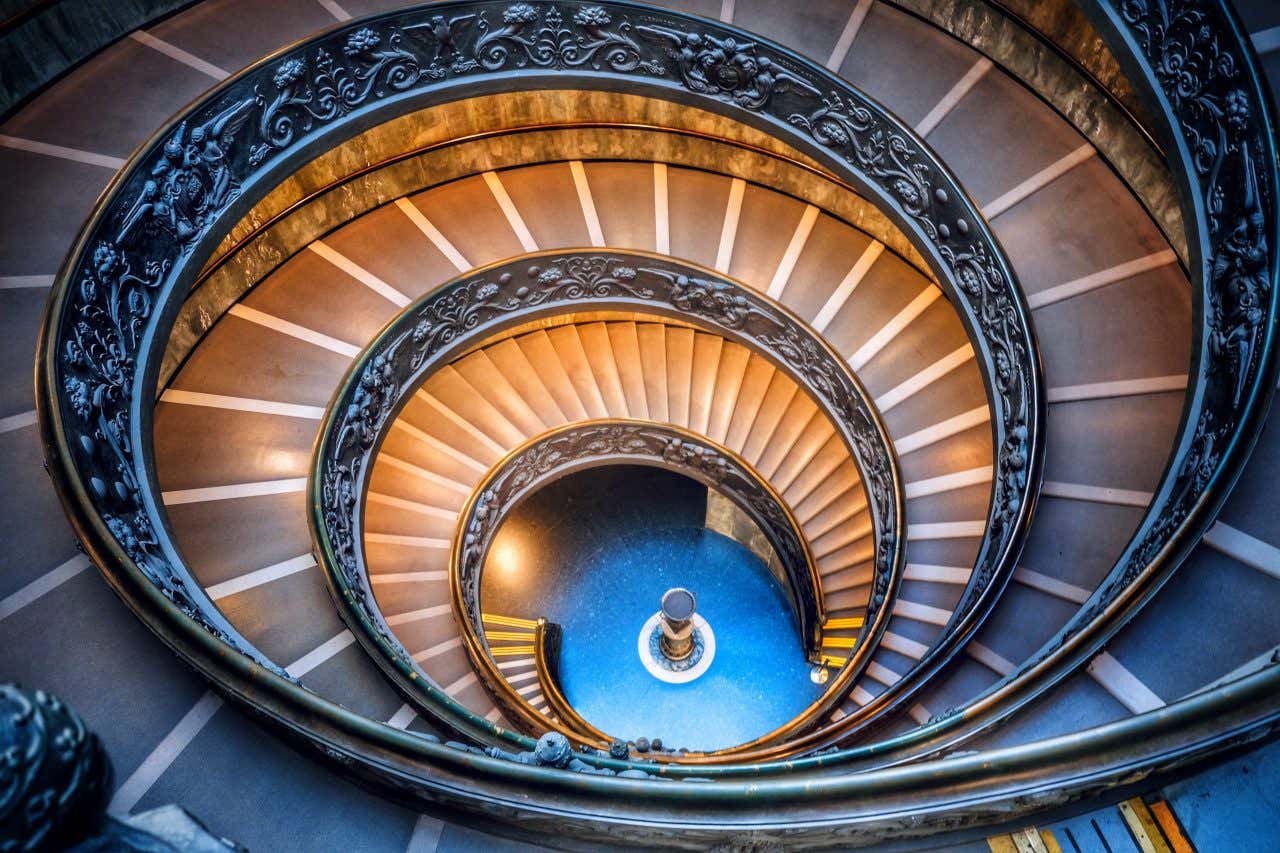
To enhance your visit, check out these guided tours:
14. Take a Day Trip from Rome
If you’re staying in Rome for a longer time, one of the best things to do in Rome is to explore other Italian cities on day trips. You can choose from the following options:
- Naples and Pompeii Day Trip
- Florence and Pisa Day Trip
- Hadrian’s Villa and Villa d’Este Day Trip
- Ostia Antica Half-Day Trip
- Capri Day Trip
- Day Trip to Assisi + Wine Tasting
Top Tips and Useful Information for Your Trip to Rome
Where to Stay in Rome?
If you still don’t know where to stay in Rome, here are some options for the most popular neighborhoods:
- Historic center: the heart of Rome, close to many of the sights. Although it’s a popular area, you can find cheaper accommodation in small hotels and guest houses.
- Trastevere: a charming neighborhood with cobbled streets, lots of restaurants, and a bohemian atmosphere. It’s a short walk from the center, with more affordable prices.
- Monti: one of the busiest neighborhoods, close to the Colosseum. Ideal for those who want to stay close to the sights and enjoy the excitement of Rome, with mid-range accommodation options.
- Termini: located near Termini train station, the neighborhood offers more affordable accommodation options, with easy access to public transport.
- Prati: close to the Vatican, this is a more residential and quiet neighborhood with good connections to the metro network, ideal for those looking for a safer area and medium-priced accommodation.
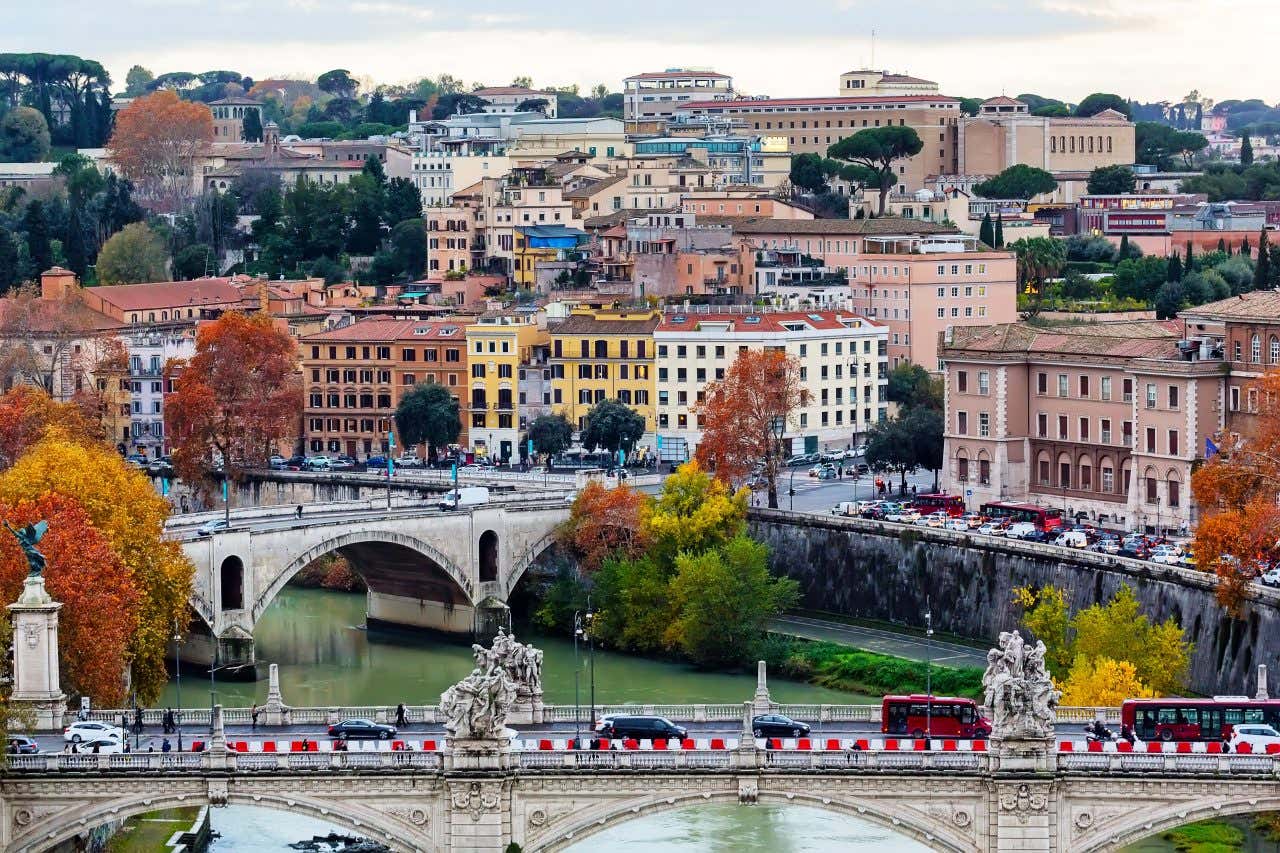
How to Get from the Airport to the Centre of Rome
There are two airports in Rome: Leonardo da Vinci Fiumicino International Airport and Ciampino Airport. To get to the centre from the airports, you can use taxis, buses, rented cars or trains. However, for more peace of mind, you can rely on our transfer service between the airport and the city of Rome.
A much more comfortable and convenient option is our private transfer service, which will pick you up from your chosen airport at your chosen time and take you straight to your hotel or accommodation. You can also book the return journey from your hotel to the airport, choosing the time you want to arrive for your flight.
Getting Around Rome
There are several ways to get around Rome. Many of the monuments and attractions are close to each other, making the city pretty walkable. However, if you want to explore outside the city center, you can use the metro, buses or trams. Here are some details about each option:
- Metro: there are three main lines, A (orange), B (blue), and C (green), which cover most of the city, including the Vatican, the Colosseum, and the historic center.
- Bus: the bus network pretty much covers the entire city, including areas that the metro can’t reach. However, bear in mind that at peak times the buses get quite busy and there may be delays. You can also easily make your way between landmarks with the Big Bus Rome sightseeing bus.
- Trams: the trams run through parts of the city, but they don’t cover as much as the bus or the metro.
Tip: use an app like Google Maps or Moovit, to find the places you want to go to and discover the best transport options.
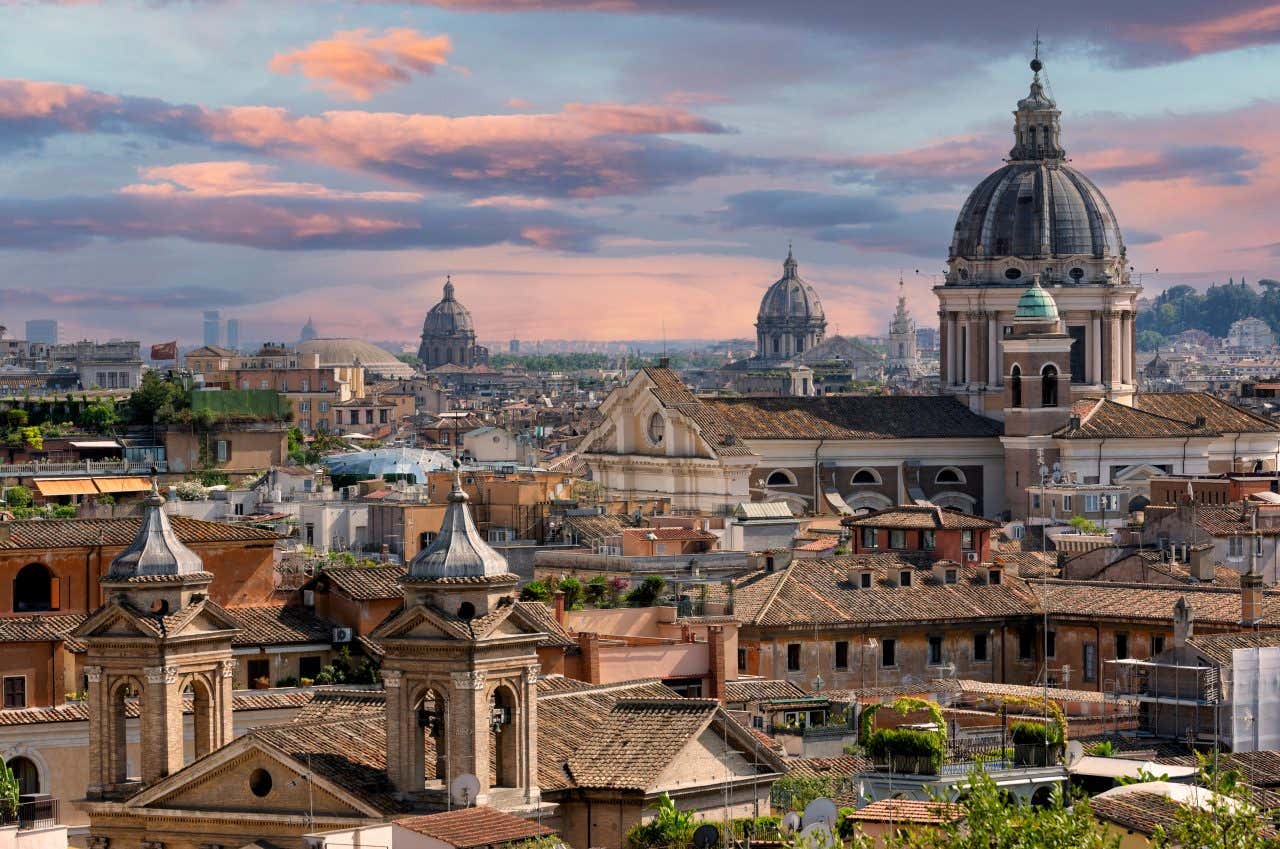
When Is the Best Time to Travel to Rome?
The best seasons to visit Rome are spring and autumn, i.e. from March to May or from September to November. At these times, considered low season, the weather is more pleasant and there are fewer tourists.
Summer, from June to August, is very busy and hot, with lots of outdoor events and large crowds. Winter, from December to February, is quieter and more budget-friendly, with chilly but bearable temperatures between 8°C and 15°C (46°F to 59°F). However, it’s more likely to rain.
How Many Days Do You Need in Rome?
If you want to see all of Rome’s essential sights, we recommend going for between 4 and 7 days. Of course, the longer your trip, the more you’ll be able to see. If you stay for a longer trip, you can explore the city more leisurely, as well as visit other neighborhoods and take day trips to other Italian cities.
Italian Food
If you’re anything like us, one of the main reasons you’re visiting Rome is to indulge in its world-renowned cuisine! Exploring local dishes is one of the best ways to immerse yourself in a destination’s culture—especially when it comes to Italian food. In Rome, be sure to try iconic dishes like cacio e pepe, carbonara, amatriciana, and saltimbocca alla romana. For dessert, don’t miss out on the traditional gelato and tiramisù, as well as local treats like maritozzo, crostata di ricotta e visciole, and pangiallo. Trust us, you won’t leave Rome hungry!
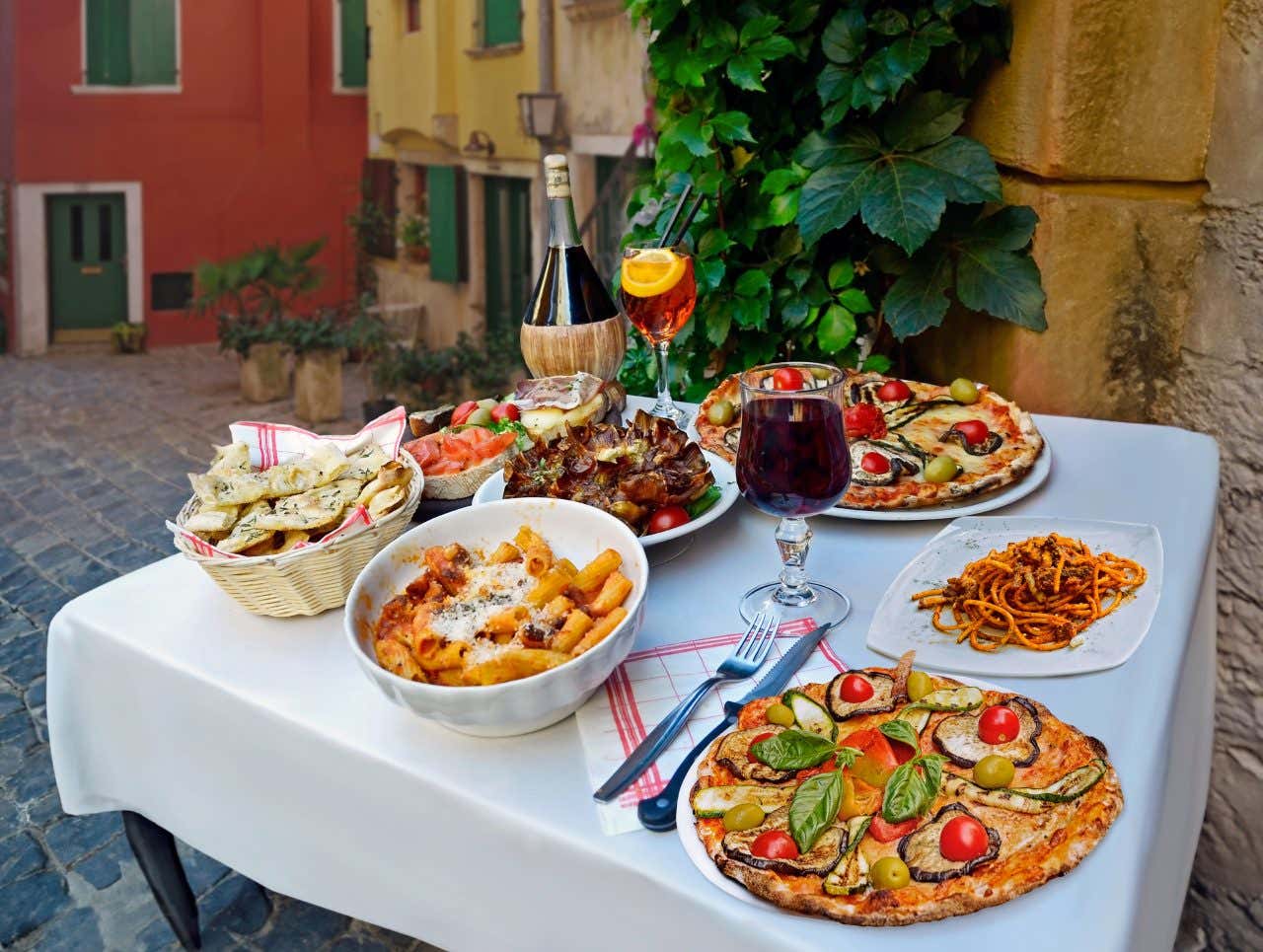
Although you’ll find restaurants and cafés all over Rome, one of the best neighborhoods to enjoy Italian food is Trastevere. There, you’ll find a variety of traditional trattorias where you can sample real Roman cuisine. Book this food tour of Trastevere to see for yourself why this neighborhood is so popular among foodies!
Stay Connected in Rome
One of our top tips is to get an eSIM before you go to Italy. This can make it easier if you need to get in touch with someone waiting for you at the airport, call a taxi, or in case of an emergency.
In addition, having good data connection will ensure your trip runs smoothly, allowing you to access maps and any information you may need to get from A to B. Another benefit is also being able to keep your social media updated! By purchasing a Civitatis eSIM Card for Italy, you’ll arrive in Rome connected and ready to go!
Short Trips to Rome
Only have a few days in Rome? Check out our Three Days in Rome Guide, to make the most out of your trip.
So there you have it, our list of the best things to do in Rome, along with top tips for planning your ultimate Roman adventure. The Eternal City never disappoints! For even more activities and ideas to make your trip unforgettable, check out our other activities in Rome. Ciao!





